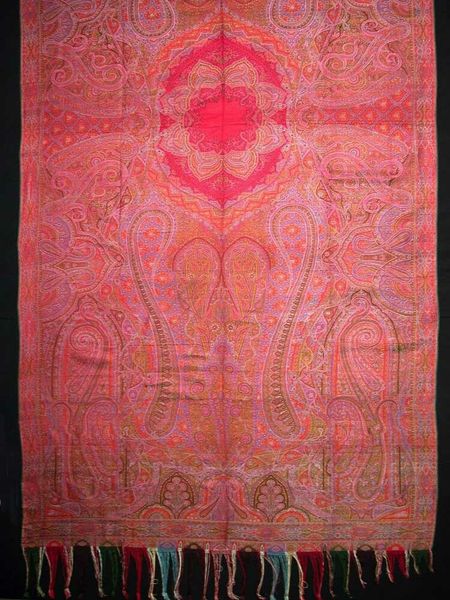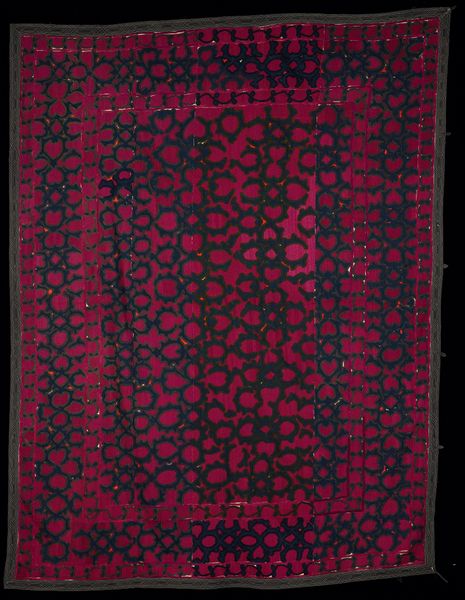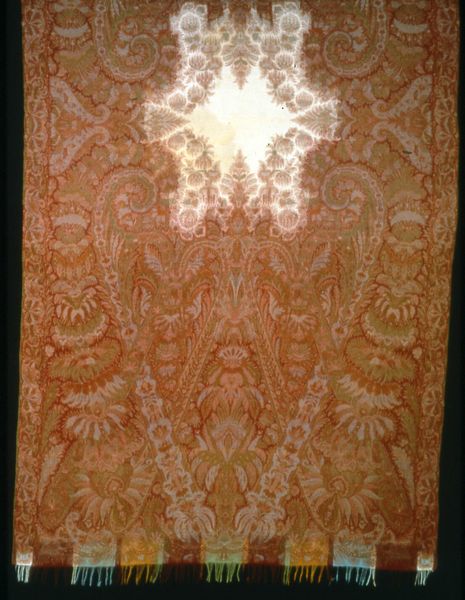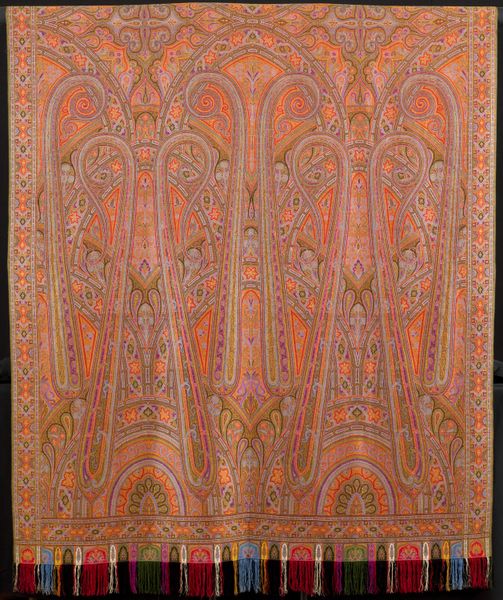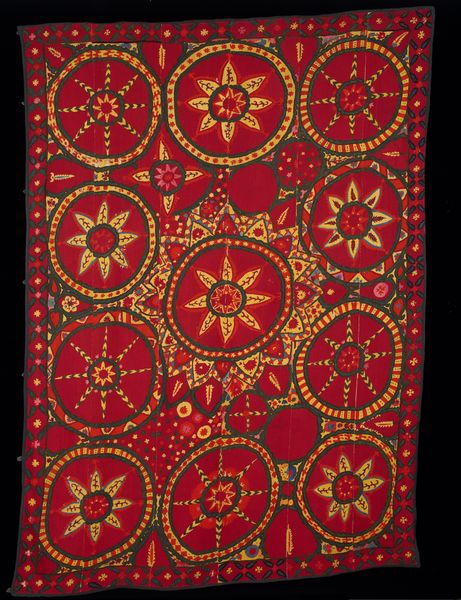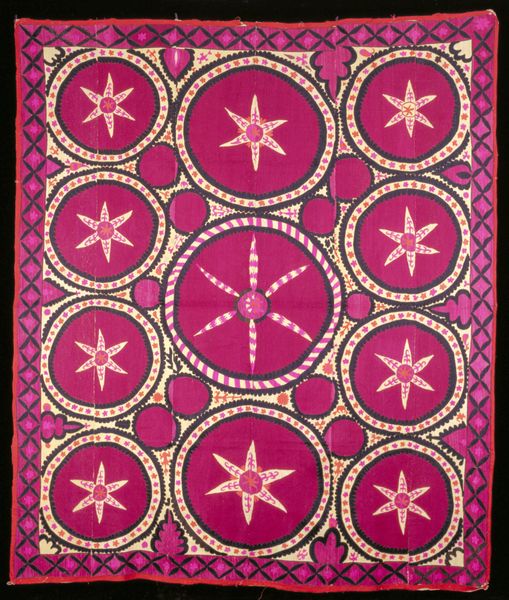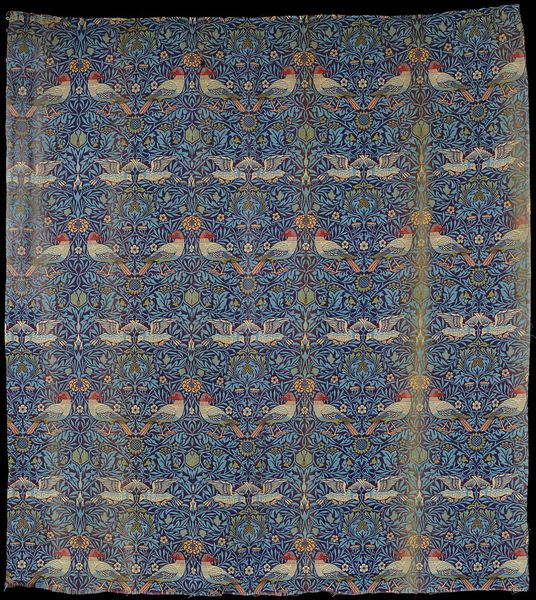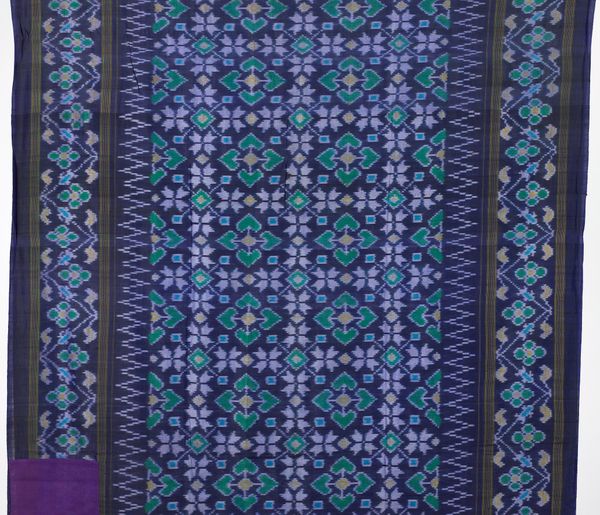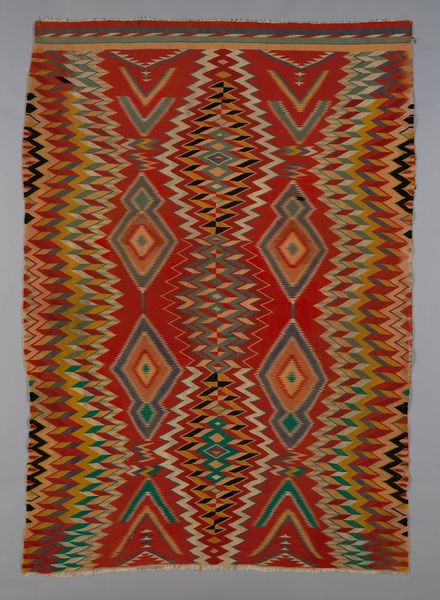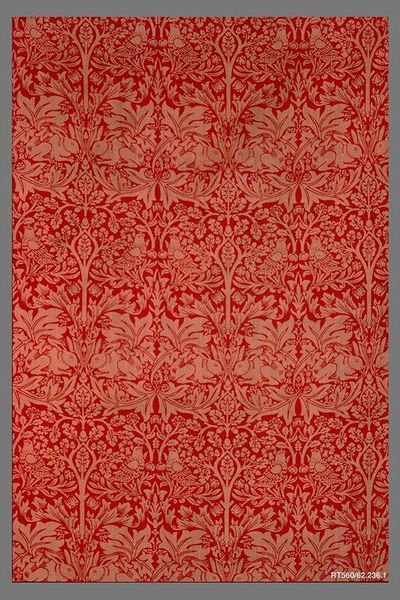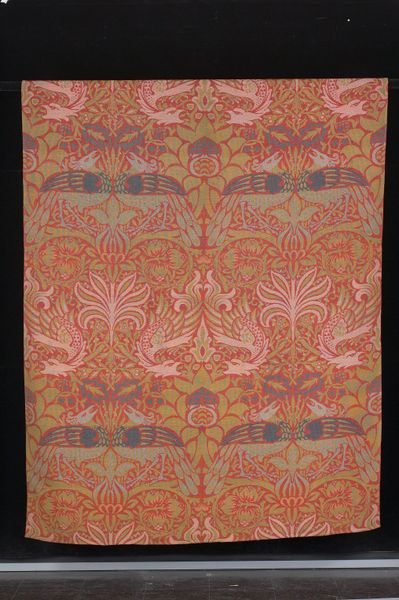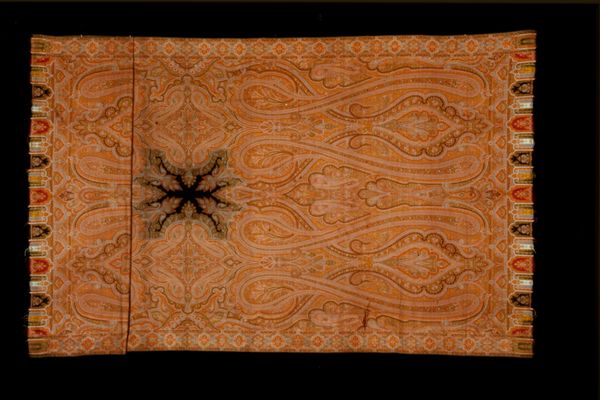
weaving, textile
#
pattern
#
pattern
#
weaving
#
textile
#
geometric pattern
#
geometric
#
costume
#
decorative-art
Dimensions: 400.69 × 169.96 cm (157 3/4 × 66 1/8 in.)
Copyright: Public Domain
Curator: Look at this beautiful woven shawl. Created circa the 1860s, the piece is attributed to Clabburn, Sons and Crisp. Editor: It’s immediately captivating! There’s a depth of pattern here that feels almost dizzying, yet calming with these repeated shapes and gentle colours. Curator: These paisley patterns, meticulously woven into the fabric, point to a complicated colonial history. Goods such as this flooded European markets, often mimicking Eastern motifs, displacing indigenous craftsmanship in many instances and exploiting workers. It is decorative but born of socio-political inequities. Editor: I’m seeing the enduring legacy of the "boteh" motif – that teardrop shape which migrates across cultures and throughout time. Think about ancient Persia, where it potentially symbolized royalty or fertility. And then its arrival in Europe, being rebranded as "paisley." It speaks to adaptation, appropriation, and the weaving together of disparate visual vocabularies. Curator: And this object acted as a very physical marker of status within Western culture at that time. Something like this woven textile, signals both wealth and the assumed "taste" of the wearer, so a very pointed visual symbol in that time. Editor: Absolutely, shawls carried immense social weight. But beyond status, I feel it could have operated as an early expression of personal narrative. A subtle but rich language within which a woman may subtly articulate identity. Imagine how the specific arrangement of pattern or shade communicates within the confines of a social structure? Curator: I appreciate your read on the agency of the wearer. Too often in the past we failed to consider the wearer as a key figure within the telling of history through cloth! For me it represents also how power often expresses itself materially, even aesthetically. The idea that a "simple shawl" contains complex economic and political layers... Editor: Well, considering how we project personal and societal symbolism into cloth over time, I find myself appreciating that simple cloth here whispers stories within pattern and symbol. Curator: Exactly. Thank you for guiding me away from being too overtly historical. I am happy for our discussion.
Comments
No comments
Be the first to comment and join the conversation on the ultimate creative platform.
